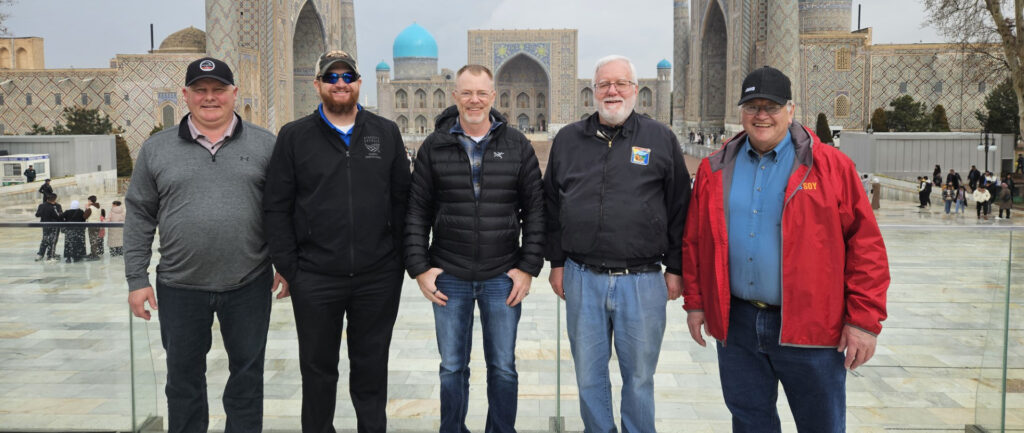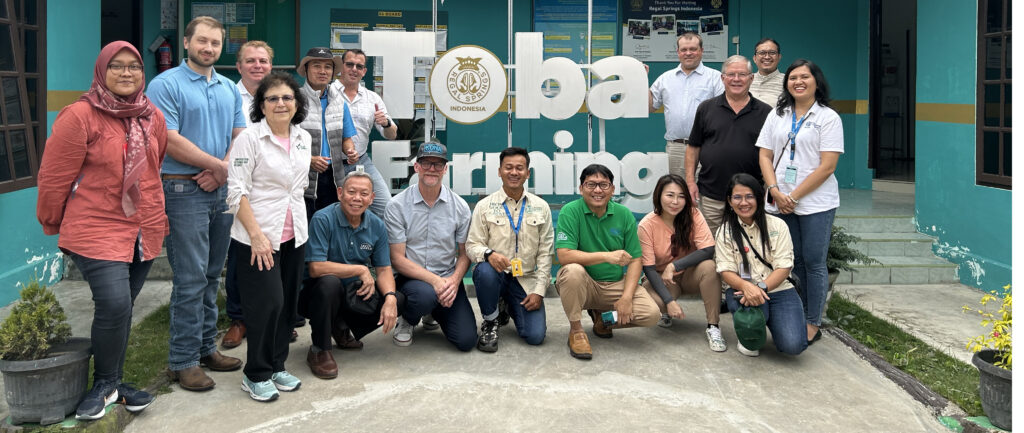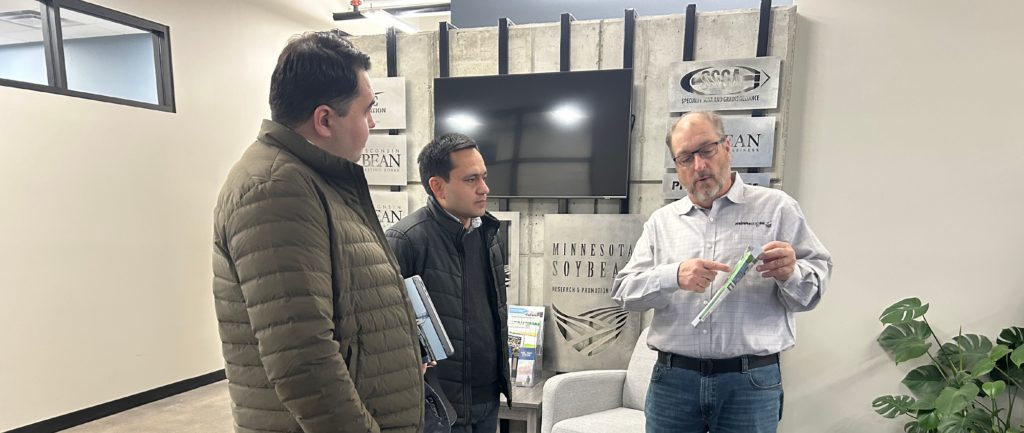The Minnesota Soybean Research & Promotion Council (MSR&PC) promotion action team works hard to expand current markets and open up new ones across the world. This is why they joined forces with tri-state commodity organizations and hosted the International Trade 101 training prior to the inaugural Northern Commodity Transportation Conference.
“The opportunity for us to all gather in one place and learn the same message is key to working together to expand our markets,” says MSR&PC Director Patrick O’Leary, chair of the Promotion Action team. “The current administration is working on nearly a half dozen trade agreements. It is important for us understand what is happening to increase value to our farmers.”
Representatives from Minnesota, North Dakota and South Dakota gathered to learn how essential amino acid levels in soybeans is the new value indicator.
“We are trying to re-characterize soybean quality for soybeans and soybean meal grown in the northern states,” says Peter Mishek, director of Mishek Inc. “Protein quality is based on the presence and balance of essential amino acids, not the crude protein numbers. A diet using lower crude protein and higher critical amino acid levels contributes to a healthier, cleaner environment and a more nutritional feed for livestock.”
While farmer leaders understand the message, understanding why this is a critical message is essential to marketing our product.
“Growth in soybean demand is driven by pork exports,” says Dave Juday, senior analyst for World Perspectives and contractor for the United States Meat Export Federation (USMEF). “Based on USDA perspectives, one-third of soybean growth exports are from pork. Working backwards from the market price, pork exports add 85 cents to the soybean market price, equating to over $67 million for Minnesota in 2018.”
As we continue to look for new markets for our soybeans, international regulations and trade barriers provide potential roadblocks to developing new relationships.
“The current administration is doing rapid fire trade agreements and we might be able to make something happen,” says Kim Nill, director of market development for MSR&PC. “It is such an important time for our industry, people like the United States Trade Representatives] (USTR) and the World Trade Organization (WTO) want to hear what we need.”
Putting words to action, Joe Smentek, executive director of the Minnesota Soybean Growers Association, shared his continued work on providing intel to USDA and Japanese government officials on current soybean trade barriers, with hopes of knocking down these barriers and providing an expanded market for Minnesota soybeans.
“Japan understand our EAA message. They know the quality of soybeans that come off of the PNW and are asking for more of it, but the government is standing in the way with regulations on minimum crude protein level,” Smentek says. “The current trade barrier lacks documentation on why it needs to be removed, so we are working to provide that documentation for them and show amino acids are the nutritional driving force, not crude protein.”
Even with the current minimum crude protein levels, there are also multiple opportunities to receive a premium on other in-demand crops.
“Every crop you grow needs to be grown for a certain market in mind,” says Eric Wenberg, executive director of the Specialty Soya and Grains Alliance (SSGA). “There is a premium for identity preserved (IP) soybeans worth millions of dollars. IP crops deliver a set of core attributes enabling a number of primary benefits, leading to economic benefits for the end user.”
No matter the crop, Northern states have been known for their low foreign material (FM) levels. This has now become more important than ever with China’s new regulations of foreign material to be less than one percent.
“Each time grain is handled, it doesn’t get any cleaner,” says Seth Naeve, University of Minnesota agronomist. “It is important for us to maintain clean soybeans for exports as it provides agronomical benefits and leads to higher quality and prices. Historically, PNW beans have been 1.2 or 1.3 percent, which is competitive to other ports, but we need to maintain that quality for our buyers overseas.”
Trade can be difficult to tackle, but gaining a base knowledge is a start.
“There is still a lot of work to be done on the trade front,” says O’Leary. “Knowing we can work together and share the same message is a step in the right direction.”







